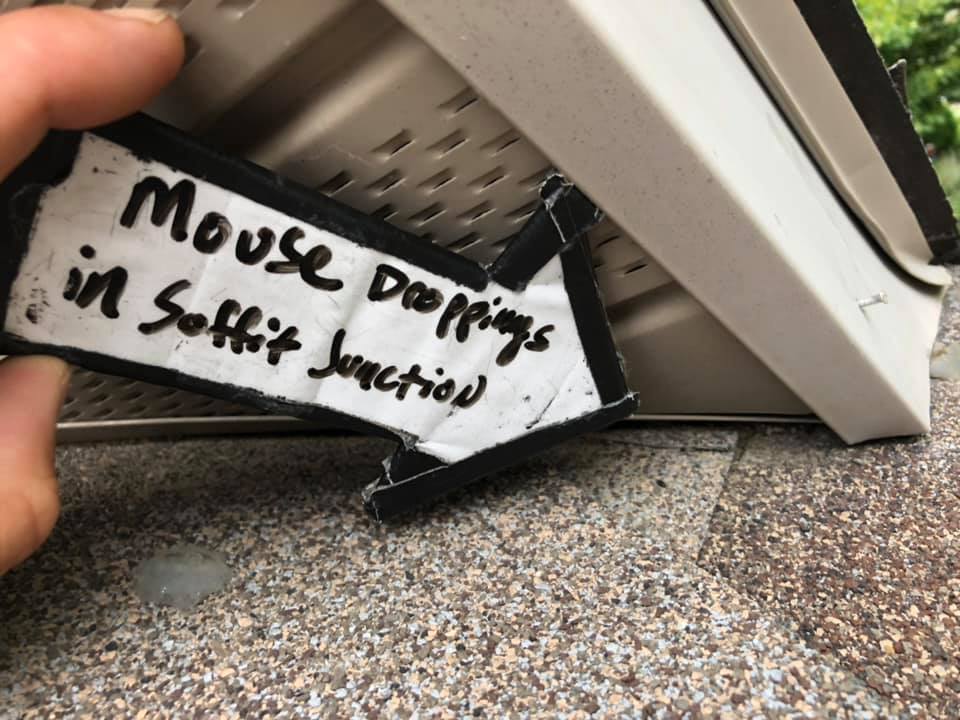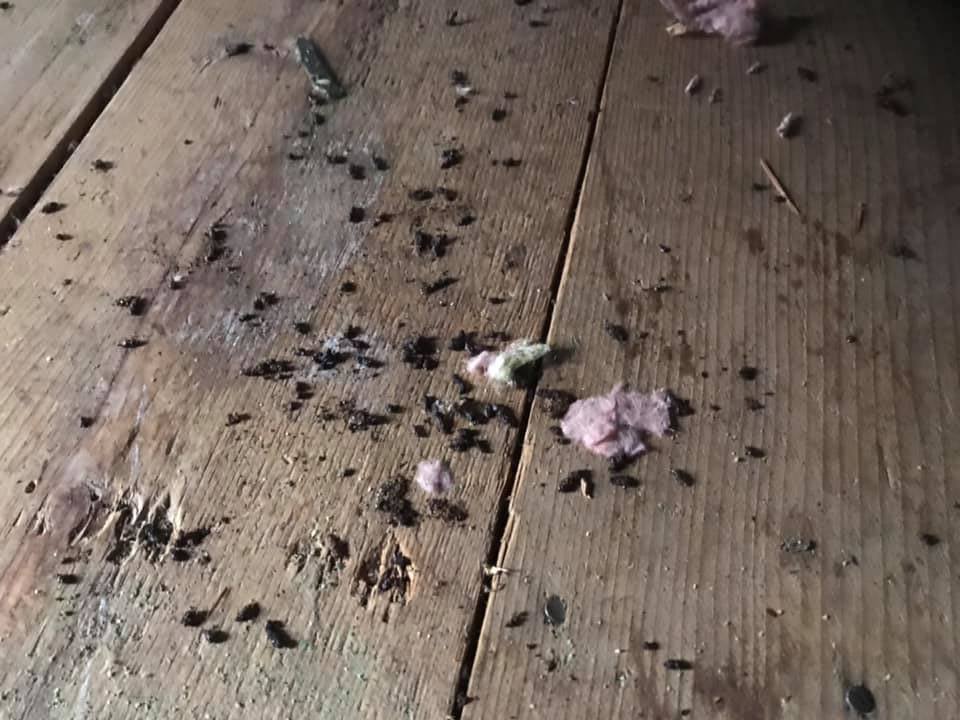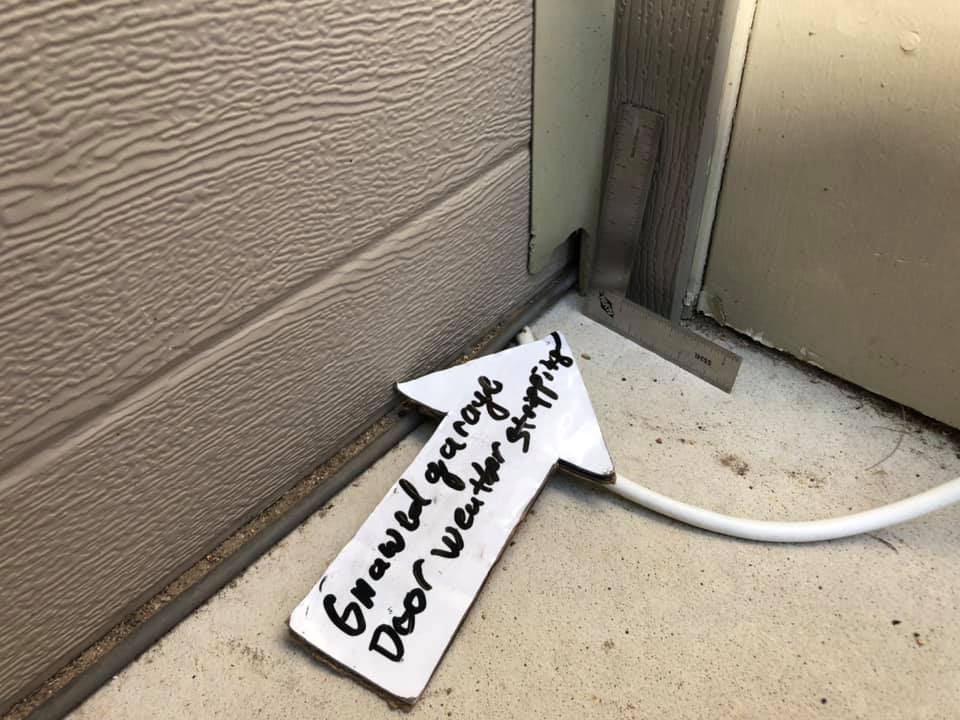Noise: Mice create a scratching sound that is relatively stationary. They are especially common at ground level, but are frequently found in attics if the exterior of the building is porous or there are trees overhanging the roof that mice could climb from.
Mice are nocturnal, so these noises would be heard during the evening. Noises can often seem amplified, as if a squirrel is above you or in your walls. The knock test is a good way to determine if what you are hearing is a mouse.
Knock on the wall or ceiling near the noise. If it continues, it is not mice. If it stops for a period of time then resumes, it is likely you have mice.
Droppings: Mouse droppings and urine staining will be present anywhere the mice are spending time, and along their travel paths. If you see fecal matter it will be small, dark and generally ovular in shape.
Chew Marks: As mice move around the perimeter of your home they search for air gaps (warm air) and pheromone trails from other mice. If a warm air draft is found, but the animal cannot enter because the gap is too small for the rodent to fit, it can easily chew around the hole to make it larger.
Tunneled insulation: When mice tunnel through insulation it leaves a distinctive appearance. In an attic you will see trails on top of the blown insulation where mice have tunneled beneath, slightly collapsing the material above it. In a wall, you will see either blown or rolled insulation full of tunnels and holes like swiss cheese. You may also see some of that material pulled out as they gathered it for nesting materials.
Nesting Materials: Mice will chew up insulation, fabrics, and other materials to create nesting material. Mice are not able to regulate their body temperatures, and use nesting to stay warm. You will see chew marks on any possessions they have used to obtain the material, and piles of it inside, behind, or under areas where they are harboraging.



